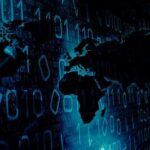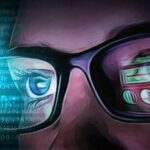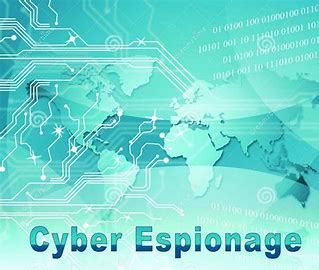Title: Cyber Espionage in the United States: Threats, Challenges, and Responses
Abstract:
Cyber espionage poses a significant threat to national security, economic competitiveness, and individual privacy in the United States. As a leading target of state-sponsored and non-state actors, the U.S. faces persistent challenges in defending against sophisticated cyber intrusions aimed at stealing sensitive information, disrupting critical infrastructure, and undermining democratic institutions.

This essay provides a comprehensive analysis of cyber espionage in the United States, examining its origins, tactics, and implications for national security. Drawing on case studies, expert insights, and policy perspectives, it explores the evolving landscape of cyber threats, assesses the effectiveness of existing defense mechanisms, and offers recommendations for enhancing cybersecurity resilience and safeguarding U.S. interests in the digital age.
Introduction:
Cyber espionage represents a grave and evolving threat to the United States, with adversaries ranging from nation-states to criminal syndicates and hacktivist groups seeking to exploit vulnerabilities in cyberspace for strategic advantage. As the proliferation of digital technologies transforms the global landscape, the U.S. faces mounting challenges in protecting its critical infrastructure, intellectual property, and democratic institutions from malicious cyber activities. This essay aims to provide a comprehensive examination of cyber espionage in the United States, shedding light on the tactics, motivations, and consequences of cyber intrusions targeting government agencies, corporations, and individuals. By analyzing case studies, policy responses, and emerging trends, it seeks to deepen understanding of the complex dynamics of cyber threats and inform strategies for enhancing cybersecurity resilience and defending U.S. interests in an increasingly interconnected world.
Origins and Evolution of Cyber Espionage:
The roots of cyber espionage can be traced back to the early days of the internet, with state-sponsored intelligence agencies pioneering techniques for covertly collecting sensitive information and conducting reconnaissance in cyberspace. Over time, advances in technology, globalization, and geopolitical tensions have fueled the proliferation of cyber espionage activities, with adversaries exploiting vulnerabilities in network infrastructure, software systems, and human behavior to infiltrate target organizations and exfiltrate valuable data.

The evolution of cyber espionage tactics, from spear-phishing and malware implants to supply chain attacks and zero-day exploits, reflects the growing sophistication and persistence of threat actors seeking to circumvent traditional defense mechanisms and evade detection.
State-Sponsored Cyber Threats:
Nation-states represent a primary source of cyber espionage threats to the United States, with foreign governments leveraging cyberspace as a strategic domain for intelligence gathering, geopolitical influence, and asymmetric warfare. Adversaries such as Russia, China, Iran, and North Korea have developed robust cyber capabilities, including sophisticated cyber espionage operations targeting government agencies, defense contractors, critical infrastructure, and private-sector enterprises. State-sponsored threat actors employ a range of tactics, techniques, and procedures (TTPs) to achieve their objectives, including advanced persistent threats (APTs), espionage malware, and social engineering techniques designed to deceive and manipulate targets for strategic advantage.
Corporate Espionage and Intellectual Property Theft:
In addition to state-sponsored cyber threats, corporate espionage and intellectual property theft pose significant challenges to U.S. competitiveness and economic security. Foreign adversaries, competitors, and criminal organizations seek to steal proprietary information, trade secrets, and research data from American companies through cyber intrusions, insider threats, and supply chain compromises. The theft of intellectual property, including cutting-edge technology, scientific research, and proprietary business information, undermines innovation, erodes market competitiveness, and threatens the long-term viability of U.S. industries across sectors such as aerospace, defense, biotechnology, and telecommunications.
Cyber Espionage and Critical Infrastructure:
Critical infrastructure sectors, including energy, finance, transportation, healthcare, and telecommunications, are prime targets for cyber espionage due to their strategic importance and interconnectedness with the broader economy and society. Threat actors seek to exploit vulnerabilities in industrial control systems (ICS), supervisory control and data acquisition (SCADA) systems, and operational technology (OT) networks to disrupt operations, steal sensitive data, and undermine public safety and national security. Cyber intrusions targeting critical infrastructure can have cascading effects, leading to service outages, financial losses, and widespread disruption of essential services, with potentially catastrophic consequences for the economy and public welfare.
Implications for National Security and Geopolitics:

The proliferation of cyber espionage poses profound implications for U.S. national security, geopolitical stability, and international relations, shaping the strategic calculus of policymakers, military planners, and intelligence agencies. The asymmetric nature of cyber warfare enables adversaries to conduct covert operations, engage in influence campaigns, and project power in cyberspace with relative impunity, blurring the lines between traditional warfare, espionage, and information operations. Cyber attacks targeting government networks, election infrastructure, and critical infrastructure pose existential threats to democratic institutions, sovereign states, and regional stability, prompting calls for enhanced deterrence, attribution, and international cooperation to mitigate cyber risks and uphold norms of responsible behavior in cyberspace.
Challenges and Limitations of Cyber Defense:
Despite concerted efforts to strengthen cybersecurity resilience and defend against cyber threats, the United States faces persistent challenges and limitations in detecting, mitigating, and attributing cyber intrusions effectively. Key challenges include:
- Attribution: The anonymity and deniability afforded by cyberspace complicate efforts to attribute cyber attacks to specific actors, organizations, or nation-states, hindering accountability and response coordination.
- Information Sharing: Limited collaboration and information sharing among government agencies, private-sector entities, and international partners impede timely threat intelligence sharing, situational awareness, and collective defense efforts.
- Supply Chain Security: Globalized supply chains introduce vulnerabilities and dependencies that can be exploited by adversaries to infiltrate trusted networks, compromise hardware and software components, and conduct supply chain attacks.

- Insider Threats: Malicious insiders, negligent employees, and unwitting collaborators pose insider threats that bypass traditional perimeter defenses and exploit trusted access to carry out cyber espionage activities.
- Emerging Threats: Rapid technological innovation and the proliferation of internet-connected devices create new attack surfaces and vectors for cyber exploitation, including Internet of Things (IoT) devices, cloud services, and artificial intelligence (AI) systems.
Policy Responses and Mitigation Strategies:
Addressing the complex challenges of cyber espionage requires a multifaceted approach that combines policy interventions, technological innovations, and international cooperation to enhance cybersecurity resilience and deter malicious actors. Some key policy responses and mitigation strategies include:
- Cybersecurity Legislation: Enacting cybersecurity legislation to enhance data protection, breach notification requirements, and incident reporting standards, while promoting public-private partnerships and information sharing initiatives to bolster cyber defenses and improve threat intelligence sharing.
- Investment in Cyber Defense: Increasing investments in cybersecurity research, development, and education to build a skilled workforce, advance cybersecurity technologies, and strengthen resilience against emerging cyber threats.
- Public Awareness and Education: Promoting cybersecurity awareness and education initiatives to empower individuals, businesses, and organizations with the knowledge and tools to recognize, mitigate, and report cyber threats effectively.
- International Cooperation: Strengthening international cooperation and collaboration on cybersecurity issues through bilateral and multilateral agreements, cybersecurity forums, and capacity-building initiatives to enhance cyber incident response, attribution, and normative frameworks for responsible behavior in cyberspace.

- Deterrence and Response: Developing and implementing deterrence strategies, including diplomatic, economic, and military measures, to impose costs on adversaries engaged in malicious cyber activities and deter future cyber attacks against U.S. interests.
Conclusion:
Cyber espionage poses complex and evolving threats to U.S. national security, economic prosperity, and democratic institutions, necessitating a comprehensive and adaptive approach to cybersecurity defense and resilience. By understanding the origins, tactics, and implications of cyber espionage, policymakers, industry stakeholders, and the public can work together to strengthen cybersecurity capabilities, safeguard critical infrastructure, and defend against emerging cyber threats in an increasingly interconnected and digital world. Through concerted efforts to enhance information sharing, collaboration, and international cooperation, the United States can mitigate cyber risks, protect its interests, and preserve the integrity of cyberspace as a global commons for peace, prosperity, and innovation.



